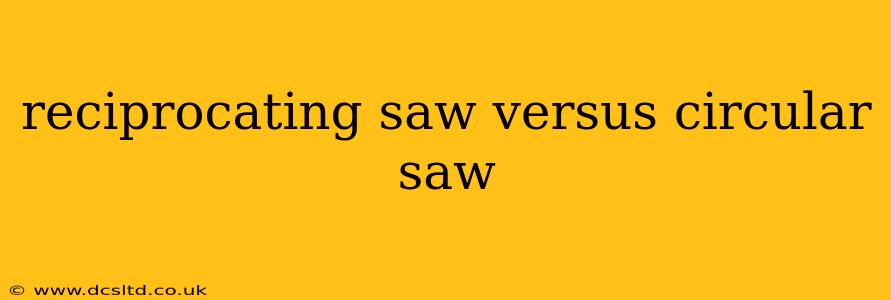Choosing the right saw for your project can feel overwhelming, especially with so many options available. Two popular choices often leave DIYers and professionals pondering: the reciprocating saw (also known as a Sawzall) and the circular saw. Both are powerful tools, but each excels in different applications. This comprehensive guide will delve into the key differences, helping you determine which saw best suits your needs.
What is a Reciprocating Saw?
A reciprocating saw, or Sawzall, is a versatile power tool with a blade that moves back and forth in a straight line. This oscillating motion allows it to cut through various materials, including wood, metal, plastic, and even drywall. Its ability to cut curves and make plunge cuts sets it apart from other saws.
Advantages of a Reciprocating Saw:
- Versatility: Cuts various materials, including curved cuts.
- Plunge Cutting: Starts cuts mid-material, ideal for demolition or remodeling.
- Reach: Long blades allow for cutting in tight spaces.
- Demolition Work: Excellent for removing sections of walls, floors, or other structures.
What is a Circular Saw?
A circular saw uses a rotating circular blade to cut through material. Primarily used for straight cuts in wood, it's a staple in carpentry and construction. While primarily designed for straight cuts, some models offer bevel adjustments for angled cuts.
Advantages of a Circular Saw:
- Speed and Efficiency: Faster for straight cuts in wood compared to a reciprocating saw.
- Accuracy: With proper technique, delivers precise straight cuts.
- Variety of Blades: Different blades for various materials and cuts (e.g., fine-tooth for finish cuts, coarse-tooth for rough cuts).
- Cost-Effective: Generally less expensive than reciprocating saws with comparable power.
Which Saw is Best for Wood Cutting?
This depends heavily on the type of wood cutting you're doing.
- Straight Cuts in Wood: A circular saw is significantly faster and more accurate for straight cuts in lumber.
- Curved Cuts in Wood: A reciprocating saw is essential for intricate or curved cuts in wood.
- Demolition or Rough Cuts in Wood: Both can handle this, but the reciprocating saw often proves more maneuverable in tight spaces.
Which Saw is Better for Metal Cutting?
The reciprocating saw is the clear winner for metal cutting. While circular saws exist for metal, they're less common and typically specialized for specific metal types. Reciprocating saws with appropriate blades can handle a wide range of metals, including steel and aluminum.
Which Saw is Easier to Use?
This is subjective and depends on prior experience. Circular saws require a bit more technique to maintain a straight cut, especially for beginners. Reciprocating saws are often considered easier to learn to control, particularly for plunge cuts and curved cuts.
Which Saw is More Powerful?
Power depends on the specific model, but generally, higher-end reciprocating saws can cut through tougher materials more effectively than circular saws. However, for straight cuts in softer materials, a circular saw's speed compensates.
What are the Safety Precautions for Using Each Saw?
Both circular and reciprocating saws present inherent dangers:
- Eye Protection: Always wear safety glasses or a face shield.
- Hearing Protection: Earplugs or earmuffs are recommended for prolonged use.
- Dust Mask: Essential when cutting materials that produce dust or fumes.
- Proper Blade Selection: Use the correct blade for the material being cut.
- Secure Grip: Maintain a firm grip on the saw throughout the cutting process.
- Proper Technique: Follow manufacturer's instructions and utilize proper cutting techniques.
In conclusion, the "better" saw depends entirely on the task. For straight cuts in wood, a circular saw shines. For versatility, curved cuts, metal cutting, or demolition work, the reciprocating saw is generally preferred. Having both in your workshop provides maximum tool versatility.
